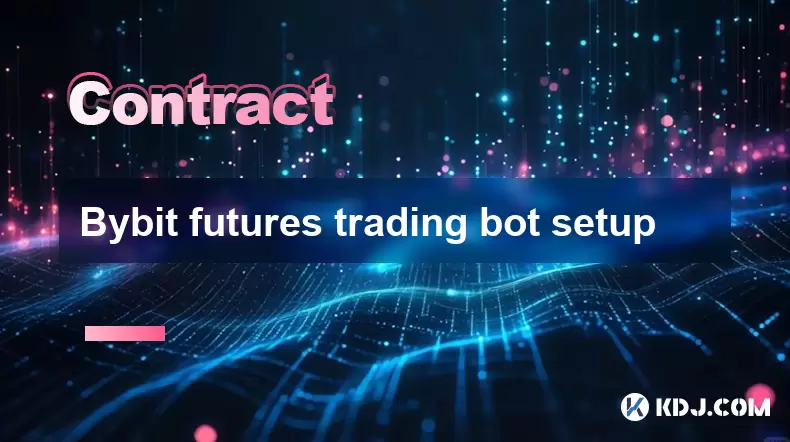-
 Bitcoin
Bitcoin $118900
1.66% -
 Ethereum
Ethereum $3735
1.35% -
 XRP
XRP $3.506
0.71% -
 Tether USDt
Tether USDt $1.000
-0.01% -
 BNB
BNB $799.4
5.78% -
 Solana
Solana $202.0
1.87% -
 USDC
USDC $0.9999
0.00% -
 Dogecoin
Dogecoin $0.2661
1.89% -
 Cardano
Cardano $0.8877
1.59% -
 TRON
TRON $0.3173
2.45% -
 Hyperliquid
Hyperliquid $45.00
2.59% -
 Stellar
Stellar $0.4723
3.40% -
 Sui
Sui $3.970
1.32% -
 Chainlink
Chainlink $19.67
1.94% -
 Hedera
Hedera $0.2710
1.99% -
 Avalanche
Avalanche $25.74
-0.01% -
 Bitcoin Cash
Bitcoin Cash $528.1
1.98% -
 Litecoin
Litecoin $120.1
3.57% -
 Shiba Inu
Shiba Inu $0.00001525
1.26% -
 UNUS SED LEO
UNUS SED LEO $8.989
-0.01% -
 Toncoin
Toncoin $3.304
1.74% -
 Polkadot
Polkadot $4.531
3.38% -
 Uniswap
Uniswap $10.74
2.51% -
 Ethena USDe
Ethena USDe $1.001
0.00% -
 Monero
Monero $325.5
2.44% -
 Pepe
Pepe $0.00001413
1.31% -
 Bitget Token
Bitget Token $4.860
0.85% -
 Dai
Dai $0.9999
0.01% -
 Aave
Aave $307.3
-2.07% -
 Bittensor
Bittensor $448.8
2.91%
Bybit futures trading bot setup
A Bybit futures trading bot automates trades using predefined strategies via API keys—set up securely, configure leverage and risk controls carefully, and always backtest before going live.
Jul 23, 2025 at 12:56 pm

What Is a Bybit Futures Trading Bot?
A Bybit futures trading bot is an automated software tool that executes trades on the Bybit futures market based on predefined strategies. These bots interact with the Bybit API to monitor price movements, place orders, and manage positions without manual intervention. Traders use bots to capitalize on market opportunities 24/7, reduce emotional bias, and improve execution speed. The key to success lies in proper setup—ensuring the bot aligns with your risk tolerance, strategy logic, and account permissions.
- Ensure your Bybit account is verified and has API access enabled
- Select a bot platform that supports Bybit’s futures endpoints (e.g., 3Commas, Bitsgap, or custom Python scripts)
- Understand that futures involve leverage and liquidation risks, so configure position sizing carefully
How to Generate Bybit API Keys Securely
To connect a bot to your Bybit account, you must generate API keys from your Bybit dashboard. This process must be done with strict attention to security settings to prevent unauthorized access. - Log into your Bybit account and navigate to "API Management" under your profile
- Click "Create API" and assign a recognizable name (e.g., "TradingBot_Main")
- Under permissions, enable "Read-Only" for basic monitoring, or "Trade" for order execution
- Whitelist your IP address if available—this restricts API usage to your device only
- Never share your secret key or paste it in untrusted applications
- Store keys in an encrypted file or password manager—not in plain text
Configuring Bot Parameters for Futures Trading
Once the API keys are generated, the bot must be configured with specific futures parameters. These include leverage, margin mode, order types, and risk controls. Misconfiguration can lead to unexpected losses or rejected orders. - Set "Isolated" or "Cross" margin mode based on your risk preference—Isolated limits loss per position
- Define leverage (e.g., 10x, 25x) in the bot settings—this must match your strategy’s volatility tolerance
- Choose order types: Limit, Market, or Post-Only—each affects slippage and execution speed
- Enable take-profit and stop-loss levels as percentages or fixed prices to automate exits
- Input your maximum position size per trade to avoid overexposure
Connecting the Bot to Bybit Using API Keys
This step involves pasting your Bybit API credentials into the bot interface or code environment. If using a third-party platform, follow their integration guide precisely. For custom bots, ensure the API wrapper supports Bybit’s v5 REST or WebSocket endpoints. - In your bot dashboard, locate the "Exchange Connection" or "Add API" section
- Paste the API Key and Secret Key into the respective fields
- Select "Bybit Futures" as the trading pair type—not spot or perpetual if using inverse futures
- Test the connection using the "Validate" or "Ping" button—this confirms API access
- If the bot uses a script, verify that environment variables (e.g.,
BYBIT_API_KEY) are correctly loadedBacktesting and Paper Trading Before Live Deployment
Before activating the bot with real funds, simulate its performance using historical data or a paper trading mode. This validates logic and identifies flaws without financial risk. Most platforms offer built-in tools for this. - Upload or select a Bybit futures historical dataset (e.g., BTCUSD 1h candles)
- Run a backtest over at least 30 days of market conditions—include both trending and sideways periods
- Analyze metrics like win rate, max drawdown, and Sharpe ratio to assess robustness
- Switch to paper trading mode—if available—to test real-time execution with fake money
- Adjust parameters if the bot shows excessive drawdown or poor risk-adjusted returns
Monitoring and Adjusting the Bot in Real-Time
Once live, continuous monitoring is essential. Bots can behave unpredictably during high volatility, low liquidity, or exchange API outages. Use alerts and logs to stay informed. - Enable email or Telegram notifications for order fills, errors, or liquidation warnings
- Check the bot’s dashboard every few hours to confirm it’s placing expected orders
- Review logs for rejected orders or API rate limit errors—these may require throttle adjustments
- Manually pause the bot during major news events (e.g., CPI data, Fed announcements) to avoid erratic behavior
- Rebalance position sizes weekly if your account equity changes significantly
Frequently Asked Questions
Can I run multiple bots on one Bybit futures account?
Yes, but each bot must use a unique API key. Do not reuse the same API credentials across bots—this can cause order conflicts or rate limit issues. Create separate keys for each bot instance and monitor total open positions to avoid exceeding your risk budget.What happens if my bot gets disconnected from Bybit’s API?
The bot will stop placing new orders but won’t close existing positions automatically. Ensure your Bybit account has "Auto-deleveraging" disabled and set trailing stop-losses manually on open trades. Always test reconnection logic in your bot before going live.How do I know if my bot is using the correct futures contract?
Verify the symbol format in your bot settings. Bybit uses symbols likeBTCUSDfor inverse futures andBTCUSDTfor linear. If the bot uses the wrong symbol, orders will be rejected. Confirm the correct contract type in Bybit’s official API documentation.Is it safe to use third-party bot platforms with my Bybit API?
Only if the platform is reputable and uses encrypted API storage. Avoid platforms that ask for your Bybit login credentials. Look for OAuth support or read user reviews about data handling. Never grant "Transfer" or "Withdrawal" permissions to any bot API key.
Disclaimer:info@kdj.com
The information provided is not trading advice. kdj.com does not assume any responsibility for any investments made based on the information provided in this article. Cryptocurrencies are highly volatile and it is highly recommended that you invest with caution after thorough research!
If you believe that the content used on this website infringes your copyright, please contact us immediately (info@kdj.com) and we will delete it promptly.
- Sui Price, Open Interest, and the $4 Breakout: Will SUI Surge?
- 2025-07-23 22:50:13
- BlockDAG, XRP, and DOT: Riding the Crypto Wave Like a Wall Street Pro
- 2025-07-23 23:10:13
- Dogecoin, Hedera, and PayFi: Altcoins Heating Up in 2025
- 2025-07-23 23:50:12
- NFT Penguins Rally: PENGU's Rise and the CryptoBatz Bounce
- 2025-07-23 23:10:13
- Dogecoin's Future: Will the Meme Dream Live On?
- 2025-07-23 22:30:13
- Mara's Bitcoin Bet: Debt, Mining, and Shadow Banking?
- 2025-07-23 22:30:13
Related knowledge

Why is my Bitstamp futures position being liquidated?
Jul 23,2025 at 11:08am
Understanding Futures Liquidation on BitstampFutures trading on Bitstamp involves borrowing funds to open leveraged positions, which amplifies both po...

Does Bitstamp offer inverse contracts?
Jul 23,2025 at 01:28pm
Understanding Inverse Contracts in Cryptocurrency TradingIn the realm of cryptocurrency derivatives, inverse contracts are a specific type of futures ...

How to find your Bitstamp futures trade history?
Jul 23,2025 at 08:07am
Understanding Bitstamp and Futures Trading AvailabilityAs of the current state of Bitstamp’s service offerings, it is critical to clarify that Bitstam...

Can I use a trailing stop on Bitstamp futures?
Jul 23,2025 at 01:42pm
Understanding Trailing Stops in Cryptocurrency TradingA trailing stop is a dynamic type of stop-loss order that adjusts automatically as the price of ...

What is the minimum trade size for Bitstamp contracts?
Jul 23,2025 at 07:14pm
Understanding Bitstamp and Its Contract OfferingsBitstamp is one of the longest-standing cryptocurrency exchanges, established in 2011, and known for ...

How to trade ETH perpetuals on Bitstamp?
Jul 23,2025 at 03:28am
Understanding ETH Perpetual ContractsETH perpetual contracts are derivative products that allow traders to speculate on the price of Ethereum without ...

Why is my Bitstamp futures position being liquidated?
Jul 23,2025 at 11:08am
Understanding Futures Liquidation on BitstampFutures trading on Bitstamp involves borrowing funds to open leveraged positions, which amplifies both po...

Does Bitstamp offer inverse contracts?
Jul 23,2025 at 01:28pm
Understanding Inverse Contracts in Cryptocurrency TradingIn the realm of cryptocurrency derivatives, inverse contracts are a specific type of futures ...

How to find your Bitstamp futures trade history?
Jul 23,2025 at 08:07am
Understanding Bitstamp and Futures Trading AvailabilityAs of the current state of Bitstamp’s service offerings, it is critical to clarify that Bitstam...

Can I use a trailing stop on Bitstamp futures?
Jul 23,2025 at 01:42pm
Understanding Trailing Stops in Cryptocurrency TradingA trailing stop is a dynamic type of stop-loss order that adjusts automatically as the price of ...

What is the minimum trade size for Bitstamp contracts?
Jul 23,2025 at 07:14pm
Understanding Bitstamp and Its Contract OfferingsBitstamp is one of the longest-standing cryptocurrency exchanges, established in 2011, and known for ...

How to trade ETH perpetuals on Bitstamp?
Jul 23,2025 at 03:28am
Understanding ETH Perpetual ContractsETH perpetual contracts are derivative products that allow traders to speculate on the price of Ethereum without ...
See all articles

























































































